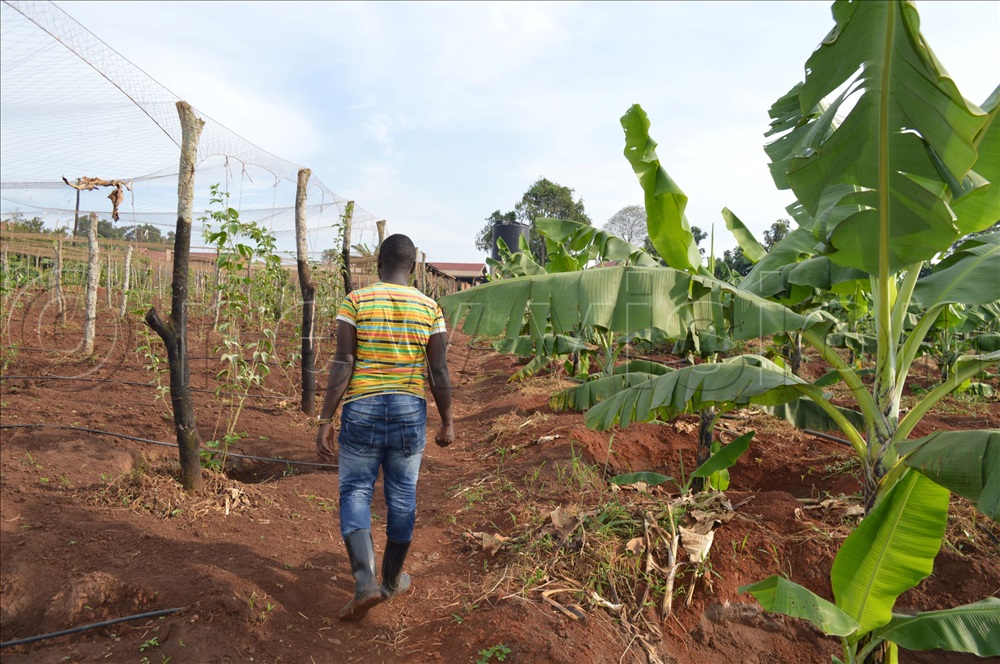By Umar Nsubuga
For those wishing to plant bananas, it is time to start digging the holes.
The holes should be three to four feet wide. They should be at least three feet deep and in straight lines at 10-foot intervals.
Joseph Bukenya, a matooke farmer says when digging the holes make sure to place the top soil on one side of the hole. This is usually brown-black soil. The red deeper soil should be placed on the opposite side. Get your planting material from a reliable source.
According to Bukenya, good banana suckers can be got from established farmers in some areas. For those with the means of cheap transport, excellent planting materials can be obtained from established places like Namulonge.
“When getting new plants from a source, inquire about the performance of the banana. A good farmer will tell you the good and bad attributes of the banana type in question,” he says.

Gideon Zakke, an agronomist says the hole should be dug straight down between the main stem and around the sucker.
“Dig down at least 2ft around the perimeter of the sucker and then with a final scoop, you have banana plant,” he says.
Zakke says to be careful, it is easy to transfer diseased plants from an infected garden to the plantation you are setting up. To avoid this, it is best not to take chances.
“After getting the plants to your farm, soak them in water mixed with chemicals to kill off any pests. Purchase the chemicals from a reputable farm supply store in your area or seek the guidance of the area agricultural extension worker,” Lubega says.
“The plants should be soaked in a wide container of water. An old metallic drum or plastic container will can be used. You can soak several suckers at a time”, Lubega advises.
“Clean the plant thoroughly to prevent importing disease on your farm. Remove most of the roots on the stem, especially those that show signs of infection,” he explains.
Cut off all the banana fibres leaving the essential plant only. He adds that soak in chemicals for a brief period then plant.
A 50% cow manure and 50% topsoil mix is recommended as ideal fertile soil to cover a newly placed plant. Besides cow manure, other animal manure is also good, he says.
Lubega says cover the banana plants with the topsoil to which the manure has been added. Step firmly on the soil around the base of the plant to make it firm.
One can choose to plant legumes like beans between the banana rows. After harvesting, it is appropriate to mulch the garden. Place layers of grass on top of one another between the rows and allow them to rot, he explains.
The grass mulch reduces the growth of weed and rots to become an organic fertiliser.
Bananas are reproduced by trans-planting existing young plants.





